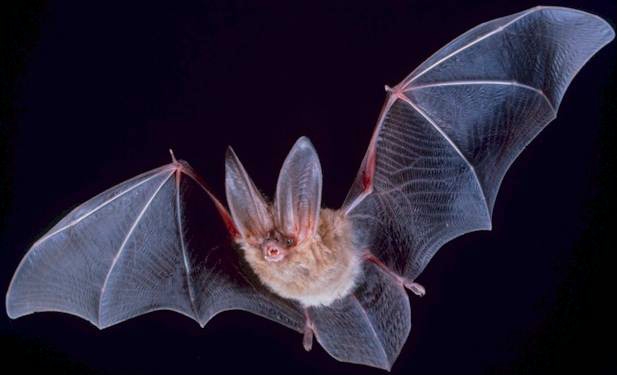Rabies Snoozes While Bats Hibernate

How quickly deadly viruses evolve depends on many factors, new research suggests. For instance, rabies evolves slower while bats are hibernating. This means it also varies by location, since bats in the tropics don't hibernate.
Rabies viruses in tropical and sub-tropical bat species evolved nearly four times faster than those in bats in temperate regions.
"Species that are widely distributed can have different behaviors in different geographical areas," study researcher Daniel Streicker, of the University of Georgia, said in a statement. "Bats in the tropics are active year-round, so more rabies virus transmission events occur per year. Viruses in hibernating bats, on the other hand, might lose up to six months' worth of opportunities for transmission."
Viral evolution
Understanding the relationship between host ecology and viral evolution rates could reveal details about other viruses, such as influenza, that occur across regions, infect multiple host species or whose transmission dynamics are impacted by humans.
"If viral evolution is faster, it could potentially lead to greater genetic diversity in crucial parts of the viral genome that allow it to shift hosts," Streicker said. "For rabies, we don't yet know what those are, so identifying them will be key. Similarly, before understanding whether climate change will speed viral evolution, we need a better idea of how environmental changes will influence host ecology and behavior."
The team's findings could help public health officials predict when rabies virus transmission is at its highest in different environments. The study was published May 17 in the journal PLoS Pathogens.
Sign up for the Live Science daily newsletter now
Get the world’s most fascinating discoveries delivered straight to your inbox.
Molecular clock
Evolutionary biologists have long thought that genetic evolution proceeds in a clock-like manner, as mutations accumulate at a fairly constant rate. This "molecular clock" allows for powerful inferences — from dating the origins of species to the origins of epidemics. However, the rate at which the clock ticks varies dramatically among species, but researchers didn't think it varied within species.
For viruses like rabies, understanding evolutionary rate has practical implications, since faster evolution can enable the virus to jump into a new species or evade its host's immune defenses. However, nearly all past studies compared viruses of completely different families and the role of the host species for these viruses has been almost completely neglected.
Streicker and colleagues compiled a database of rabies virus genetic sequences from infected bats in the U.S. and South America, representing 21 strains of the virus. They also collected information on the biology and ecology of the different bat species that served as viral hosts.
They found extreme variability in the rate of evolution in different rabies viruses, comparable to the differences seen between viruses of entirely different families. The analysis also suggested that the virus wasn't responsible for this variation since these evolution rates shifted when a strain moved into new bat species.
"Earlier studies led to the conclusion that viral genomic traits are driving the evolution rate," Streicker said. "It turns out that's not the whole story. In this case, host biology plays an important role."
The trait that best correlated with the rate of viral evolution was not the host's evolutionary history. It was its climatic region, which affects the bats' behavior.











